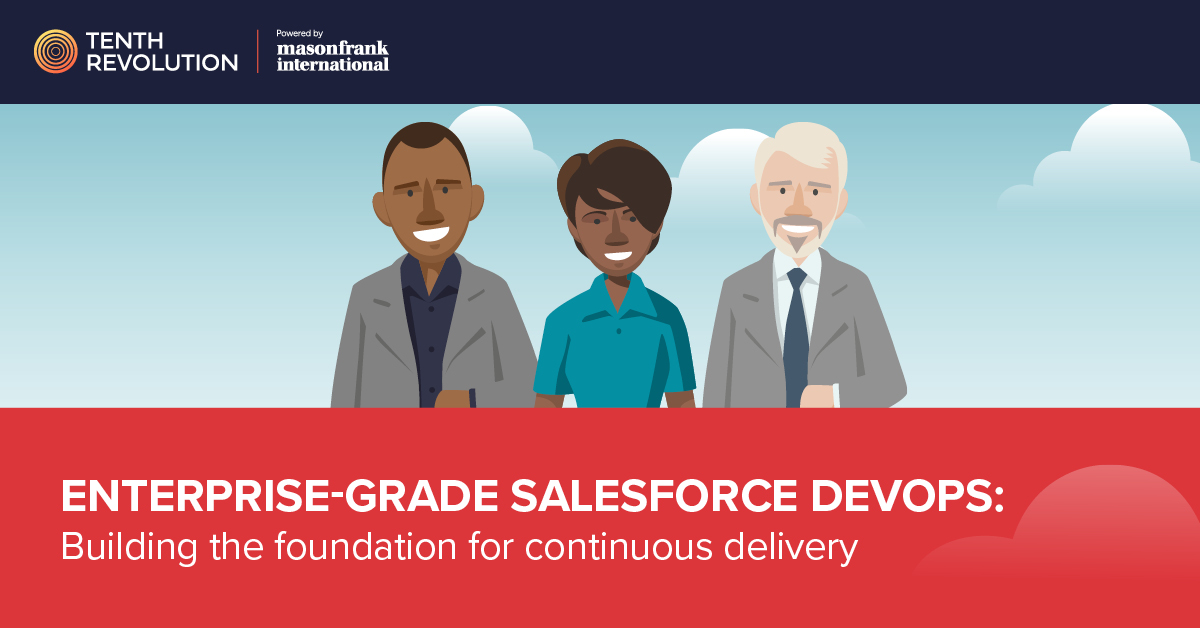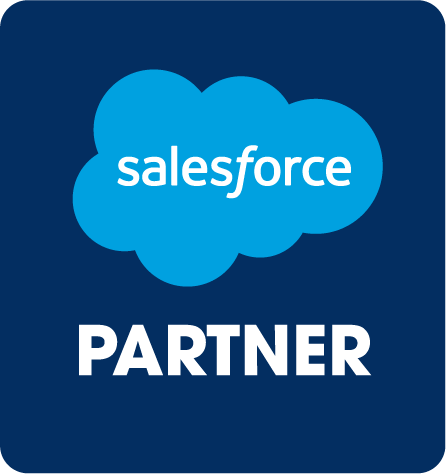
The pressure on Salesforce teams has never been higher.
Business leaders want faster release cycles, stronger compliance, and the flexibility to pivot as markets change. The old ways (manual change sets, late-stage testing, and siloed admin work) just don’t hold up anymore.
That’s why more organizations are embracing enterprise-grade Salesforce DevOps. It’s a move to source-driven delivery powered by DevOps Center, modular packaging, automated testing, and scalable environment strategies on Hyperforce. Done right, it transforms Salesforce from a slow-moving system of record into a platform that can deliver at enterprise speed.
Let’s look at the four building blocks every executive should know about.
Source-driven delivery with DevOps Center
The starting point is a cultural and technical shift away from manual change sets. DevOps Center brings both admins and developers into a single, source-driven model. Every change is logged, version-controlled, and auditable, giving teams a structured way to manage the entire lifecycle.
For business leaders, this translates into fewer deployment errors, more predictable release cycles, and better collaboration across teams. It also creates transparency—critical in larger organizations where executives need visibility into how changes affect the business.
The technology makes this possible, but success depends on skilled execution. Mason Frank provides Salesforce talent with DevOps Center experience to ensure transitions away from manual change sets are seamless and secure.
Modular architecture with unlocked packages
One of the toughest challenges for Salesforce teams is dealing with bloated, monolithic orgs. Modular design solves that. With unlocked packages, features can be broken down into manageable components that can be deployed, reused, and versioned independently.
This approach reduces technical debt, speeds up innovation, and makes upgrades far less disruptive. Instead of teams wrestling with dependencies, they can focus on building and delivering value. Executives see the payoff in smoother deployments and more flexible systems that can adapt as the business grows.
Automated testing as the compliance backbone
Testing has traditionally been a bottleneck in Salesforce delivery. Manual checks take too long and don’t scale. Automated testing flips that script, embedding quality and compliance into the pipeline itself.
Here’s what it brings to the table:
- Fewer production issues: Bugs get caught earlier, before they impact customers.
- Stronger compliance evidence: Every test run creates an auditable trail for regulators.
- Faster release cycles: Teams can move quickly without sacrificing quality.
For leaders, this means compliance becomes less of a roadblock and more of an enabler. Releases go out faster, but they’re also safer.
Automating quality checks is one side of the equation, but you also need the right expertise to design pipelines and maintain governance. Mason Frank provides Salesforce professionals who specialize in DevOps and automated testing, ensuring your compliance frameworks scale with your release cycles.
Smarter environment strategy on Hyperforce
Salesforce’s shift to Hyperforce opens up new possibilities for how organizations manage environments. Teams can spin up compliant, scalable instances in multiple regions, aligning with local data residency requirements while supporting global operations.
A thoughtful environment strategy reduces risk and downtime. It gives leaders confidence that their Salesforce investments can scale to new markets while keeping performance, security, and compliance intact.
Why this matters now
The demand for DevOps talent in Salesforce has surged alongside these technical shifts. According to Mason Frank’s Salesforce Careers & Hiring Guide 2025, the average time to hire a Salesforce professional is now over four months. That lag makes it even more important for leaders to build internal capability and secure the right expertise early, especially as DevOps skills become the new standard.
The payoff for executives
When these four building blocks come together, the results are hard to ignore:
- Continuous delivery that keeps pace with market demands.
- Governance and visibility that satisfy both auditors and stakeholders.
- Resilience and scalability to expand globally without losing control.
- Higher team productivity as manual, repetitive tasks give way to automation.
Enterprise-grade Salesforce DevOps is more than a technical upgrade. It acts as a strategic enabler for innovation and agility. It helps organizations innovate faster, reduce risk, and deliver the kind of agility that modern business requires.


